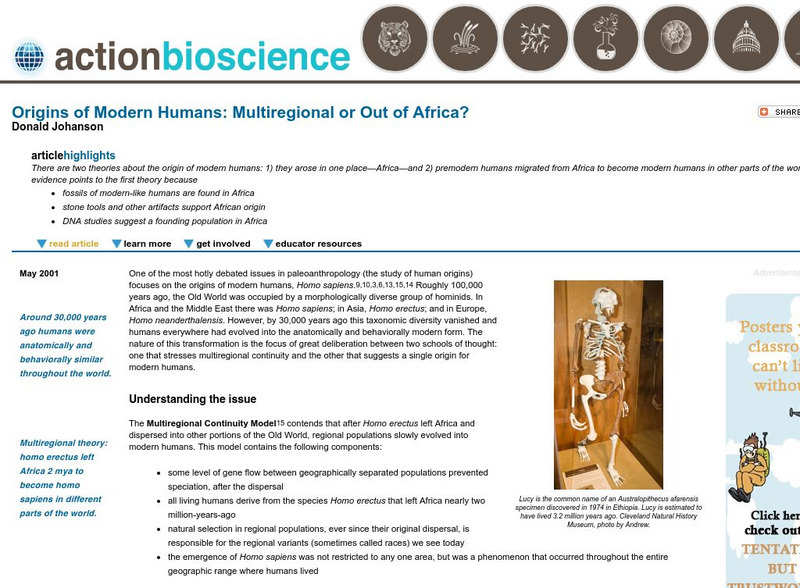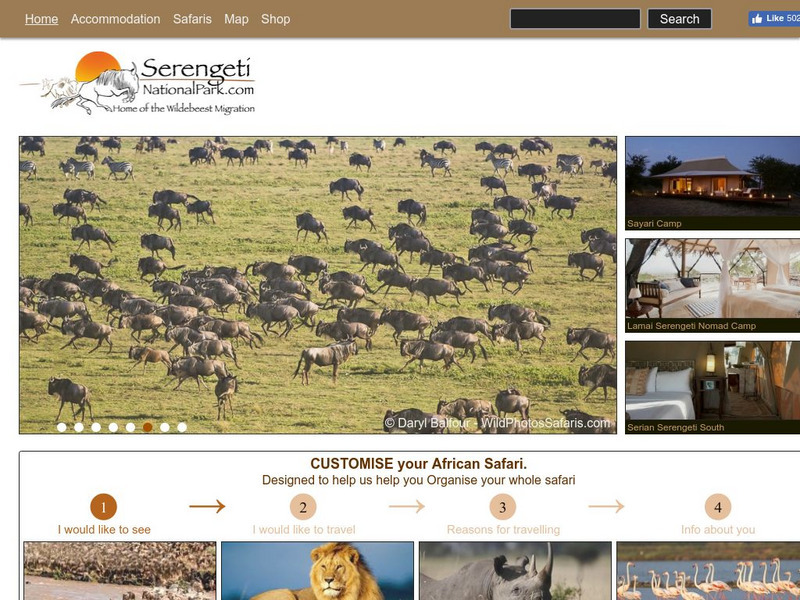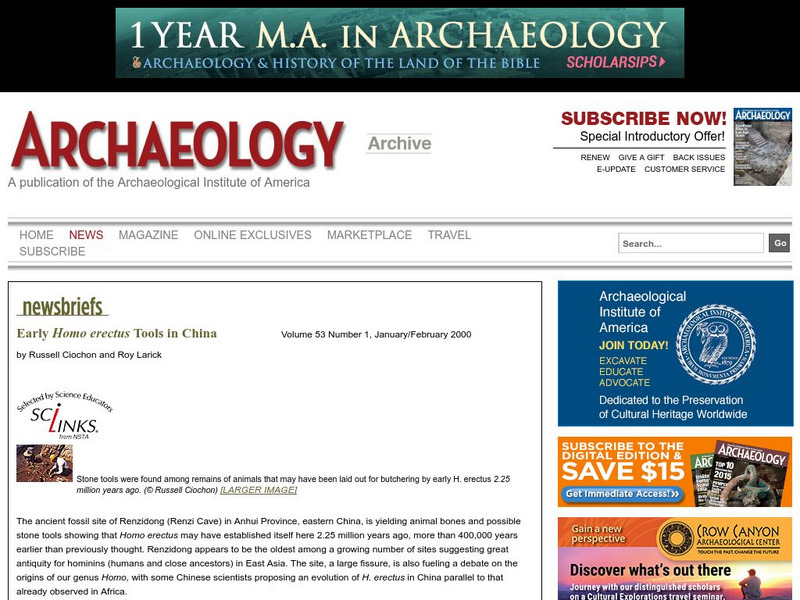Curated OER
How Things Fly
Students, by drawing on their own experiences, discuss and examine the basic physics of flight. They participate in a variety of activities regarding flight.
Curated OER
Stories of the Wrights' Flight
Pupils examine and compare primary and secondary source accounts of the Wright brothers' first flights on December 17, 1903.
Curated OER
Money Talks
Students move from fact finding to interpretation as they examine paper money from the time of the American Revolution. In the final exercise, they use the issue dates of the bills to construct a chronology of political changes during...
Curated OER
Pictures Telling Stories
Students see the importance of primary sources in the study of history, but also the limitations of relying only on primary sources of taking the money, as it were, at face value.
Curated OER
The Rocky Shore
Pupils compare a realistic landscape painting with a photograph of the same place.
Curated OER
Spy on a Spider
Students view slides or live specimens to name and describe the distinguishing features of groups of arthropods, especially spiders and insects. They complete worksheets, observe webs and then search for and record where spiders can be...
Curated OER
Creatures from Planet X: Spiders
Students are given a description of some fascinating animals from "Planet X". They follow the descriptions given to illustrate one of these animals paying careful attention to introduced vocabulary such as 'appendages', 'receptors', and...
Curated OER
Facts, Feats and Folklore: Spiders
Students review and discuss a variety of sayings, folklore and superstitions about spiders. They discuss this information and choose either an interesting fact or appealing foklore tradition to illustrate.
Curated OER
Letters from the Japanese American Internment
Young scholars make deductions about life in an internment camp by reading and comparing letters written to Clara Breed. Along the way, they consider the advantages of looking at a historical event from the multiple points of view of...
Howard Hughes Medical Institute
Hhmi: Bio Interactive: Using Dna to Trace Human Migration
A slideshow tracing human migration to show that "all living humans originated from populations of ancestors who migrated out of Africa less than 100,000 years ago. Learn how scientists have used genetic markers to trace the migration...
Khan Academy
Khan Academy: Activity: Human Migration Patterns
Use this activity to figure out where the first humans lived. This activity requires students to read clues and use their understanding of the clues to create a map to give them a visual representation of early humans movements.
Stanford University
Stanford University: Scientists Use Dna Fragments to Trace Migration
Scientists piece together the puzzle of human migration out of Africa using DNA research. (Published in 2003)
American Institute of Biological Sciences
Action Bioscience: Origins of Modern Humans: Multiregional or Out of Africa
Two migration theories are on the table for consideration. Weigh the evidence of each one in this article by Donald Johanson of Lucy fame.
Other
New Scientist: Out of Africa and Straight to the Beach
New evidence is emerging from DNA studies that modern man walked out of Africa and headed for Australia.
A&E Television
History.com: How Early Humans Survived the Ice Age
The most recent ice age peaked between 24,000 and 21,000 years ago, when vast ice sheets covered North America and northern Europe, and mountain ranges like Africa's Mt. Kilimanjaro and South America's Andes were encased in glaciers. At...
National Humanities Center
National Humanities Center: Toolbox Library: Africa, Making of African American Identity: V. 2
Photographs and an address that illustrate the role Africa played in black identity in the late-nineteenth century. This article compares Rev. Henry McNeal Turner's "back to Africa" campaign with the Exoduster migration to Kansas led by...
Khan Academy
Khan Academy: World History: Unit: 600 1450 Regional & Interregional Interaction
The World History unit is from Khan Academy. The years 600 to 1450 are included. The Byzantine Empire, European Middle Ages, origins of Islam, spread of Islam, Great Schism, Crusades, Mongols, Song China, Medieval Japan, Maya Empire,...
Khan Academy
Khan Academy: Power Figure (Kongo Peoples)
Nkisi nkondi figures are highly recognizable through an accumulation of pegs, blades, nails, or other sharp objects inserted into its surface. This Kongo tradition has survived over the centuries and migrated to the Americas and the...
Other
Serengeti National Park
The beautiful, official site for the Serengeti National Park provides extensive information about the Serengeti ecosystem, physical features, wildlife, and taking a safari through the region. As an added bonus, learn some Swahili.
Archaeological Institute of America
Early Homo Erectus Tools in China
An article which describes a fossil site in eastern China where evidence has been found that Home erectus may have been active in eastern China some 400,000 years earlier than scientists believed. The authors also summarize the debate...



















